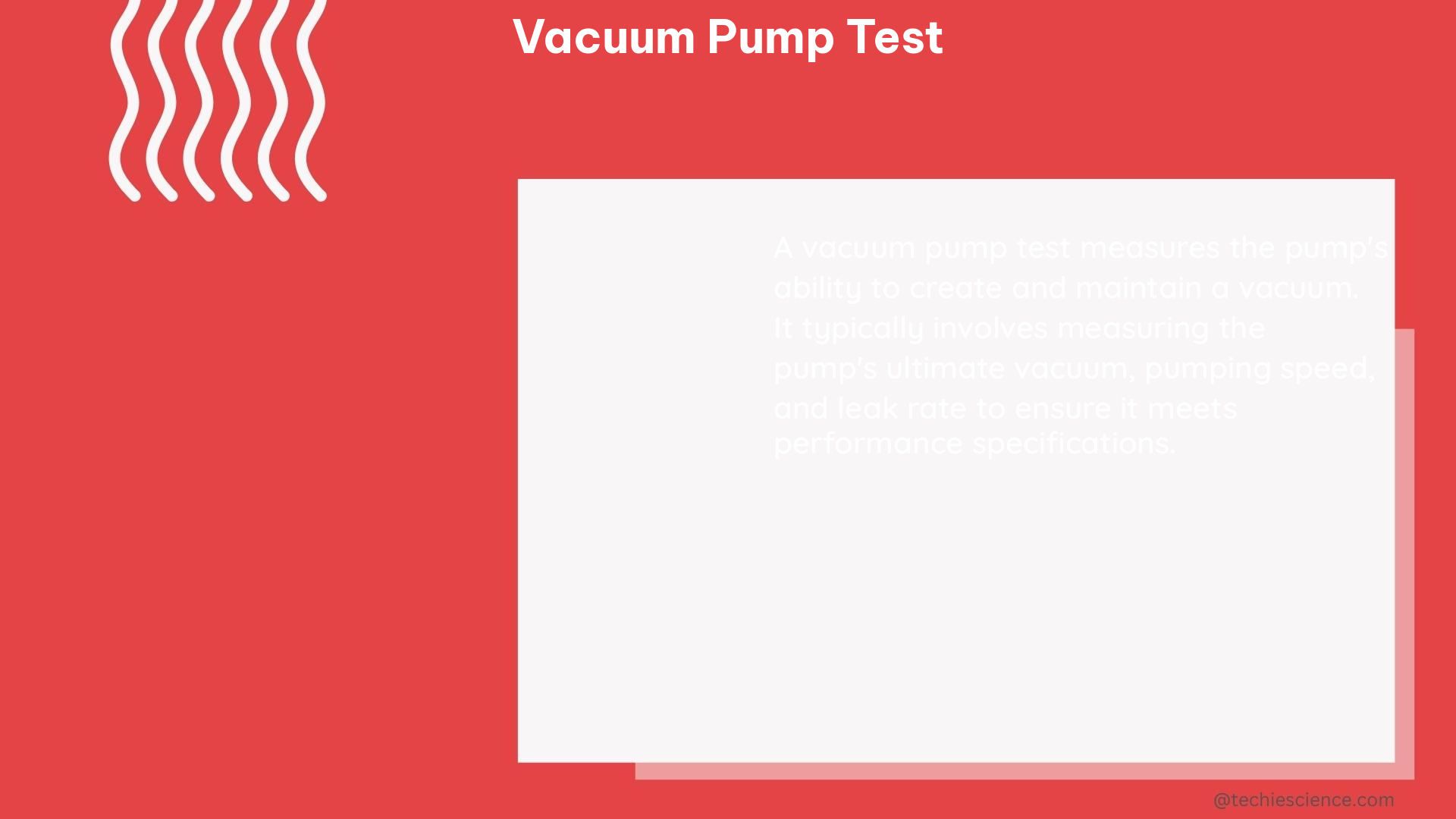Vacuum pumps are essential components in various industrial and scientific applications, from semiconductor manufacturing to cryogenic systems. Ensuring the proper functioning of these pumps is crucial to maintain the integrity of the processes they support. This comprehensive guide delves into the intricacies of vacuum pump testing, providing a detailed exploration of the various methods and techniques to assess the performance, detect leaks, and evaluate the overall condition of these critical devices.
Micron Gauge Test
The Micron Gauge Test is a widely used field test for evaluating the performance of a vacuum pump. In this method, a micron gauge is placed directly on top of the pump, and the pump is then turned on. The micron gauge measures the vacuum level, and a properly functioning pump should continue to pull down to its lowest point, typically less than 200 microns. This test is particularly useful for identifying issues such as worn-out seals, contaminated oil, or malfunctioning components within the pump.
Nitrogen Pressure Test

Before evacuating the system, it is recommended to perform a Nitrogen Pressure Test. This method involves pressurizing the system with nitrogen, which helps diagnose problems related to positive pressure. By identifying issues at this stage, it becomes easier to pinpoint the root cause and address them more effectively.
The Nitrogen Pressure Test is typically conducted by introducing nitrogen gas into the system and monitoring the pressure. Any significant pressure drops or fluctuations may indicate the presence of leaks or other issues that need to be addressed before proceeding with the evacuation process.
Realistic Simulation
After testing the vacuum setup with nitrogen, the next step is to perform a Realistic Simulation. This involves pulling down a recovery cylinder with a hose, ensuring that the manifold or other components do not introduce any issues when integrated into the system.
During the Realistic Simulation, the vacuum pump is tasked with evacuating the recovery cylinder, and the performance is closely monitored. This test helps validate the pump’s ability to handle the actual workload it will encounter in the real-world application, providing valuable insights into its capabilities and limitations.
Bubble Test
The Bubble Test is a reliable method for detecting low-pressure leaks, particularly in systems operating at lower vacuum levels. This test involves submerging a punctured bicycle tube underwater and observing where the bubbles emerge. Alternatively, a similar approach can be used by applying a washing-up liquid solution around the joints of active water/gas pipes and observing the formation of a froth, which indicates the presence of a leak.
The Bubble Test is a simple yet effective way to visually identify the location of low-pressure leaks, allowing for targeted repairs and maintenance.
Pump-down Test
The Pump-down Test is conducted by evacuating a closed vacuum vessel until a specific pressure is achieved, and then closing the pump’s inlet valve. After a predetermined period, the inlet valve is reopened, and the time it takes for the pump to return the vacuum to the original evacuated level is recorded.
If the time required to restore the vacuum to the original level remains constant, it indicates the presence of a leak in the system. This test provides valuable information about the pump’s ability to maintain a stable vacuum and helps identify any potential leaks or issues within the system.
Pressure Rise Test
The Pressure Rise Test involves plotting the vacuum level against time after a vacuum level has been achieved and the system has been isolated. If a leak is present, the resulting curve will be a straight line. However, if the pressure rise is due to gas liberation from the system walls, the curve will gradually taper off to reach a final, stable value.
This test is particularly useful for distinguishing between leaks and outgassing, which can both contribute to pressure changes within the vacuum system.
Helium Sniffer Mode/Helium Vacuum Mode Tests
For high-vacuum pressure applications, Helium Sniffer Mode and Helium Vacuum Mode Tests are employed. These specialized tests utilize the unique properties of helium to detect even the smallest of leaks, providing reliable and quantifiable results that can be constantly monitored.
In the Helium Sniffer Mode, a helium-filled probe is used to scan the system for any potential leak points, while the Helium Vacuum Mode involves introducing helium into the system and monitoring the vacuum level for any changes that would indicate the presence of a leak.
These advanced testing methods are particularly valuable in high-vacuum applications, where even the slightest leak can have significant consequences on the overall system performance and integrity.
When conducting vacuum pump tests, it is essential to consider the specific requirements and operating vacuum levels of the system. Different applications may have varying leak rate tolerances, and what is acceptable at a lower vacuum level may not be suitable for higher-vacuum applications. By understanding the nuances of each testing method and tailoring the approach to the system’s needs, you can ensure the optimal performance and reliability of your vacuum pumps.
Reference:
– Vacuum Pump Troubleshooting and Maintenance
– Vacuum Pump Testing and Diagnostics
– Vacuum Pump Maintenance and Testing

The lambdageeks.com Core SME Team is a group of experienced subject matter experts from diverse scientific and technical fields including Physics, Chemistry, Technology,Electronics & Electrical Engineering, Automotive, Mechanical Engineering. Our team collaborates to create high-quality, well-researched articles on a wide range of science and technology topics for the lambdageeks.com website.
All Our Senior SME are having more than 7 Years of experience in the respective fields . They are either Working Industry Professionals or assocaited With different Universities. Refer Our Authors Page to get to know About our Core SMEs.